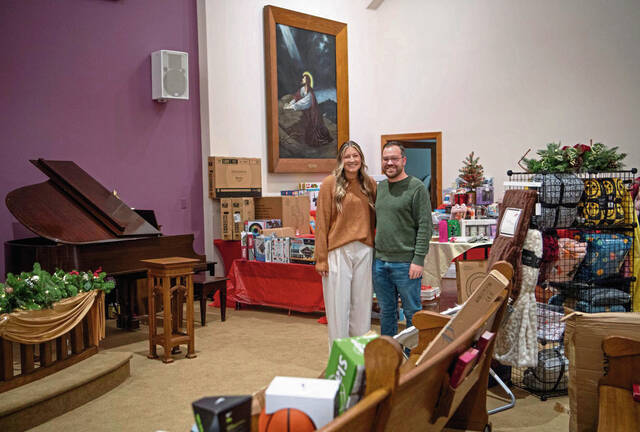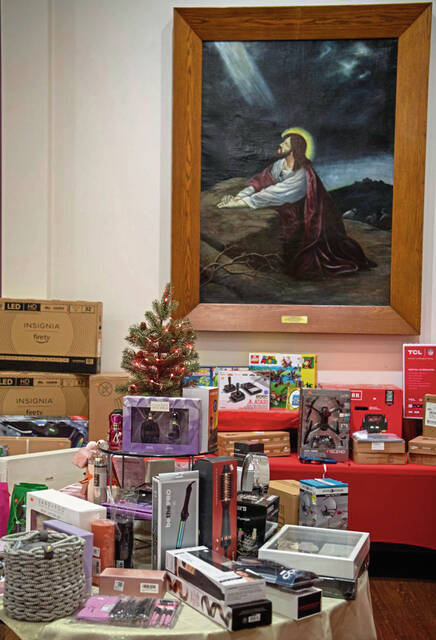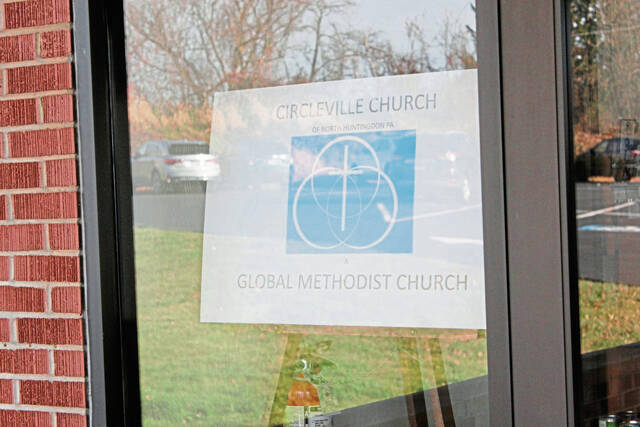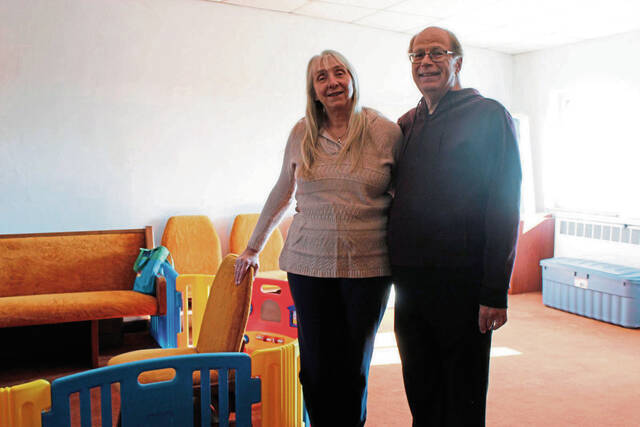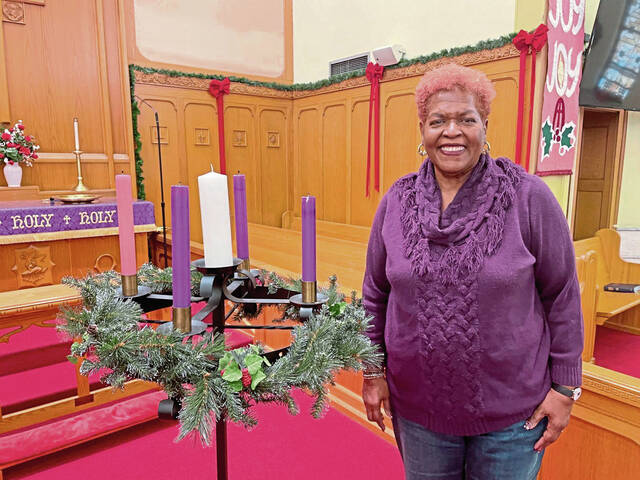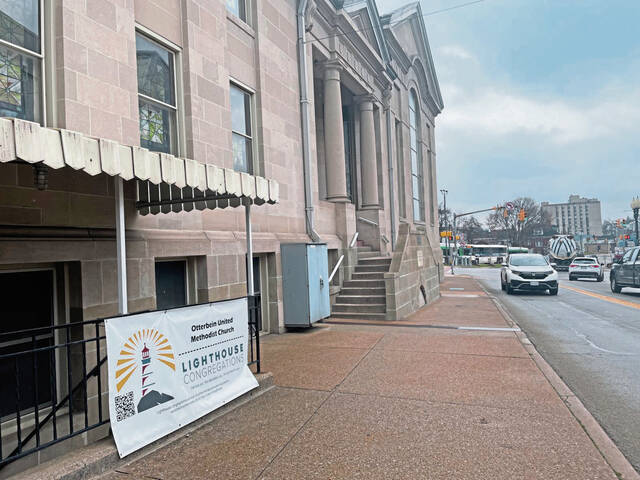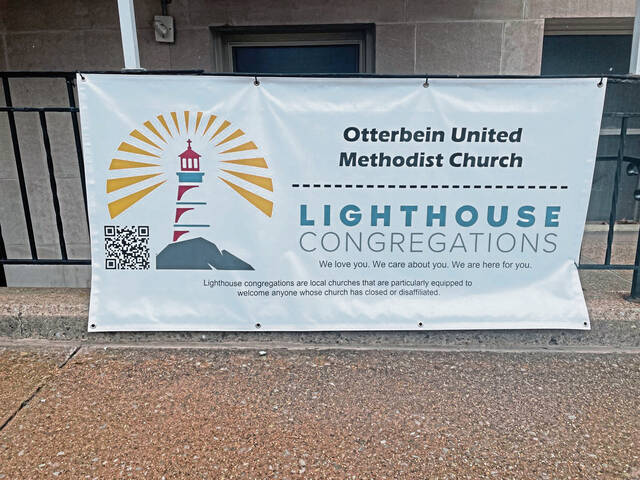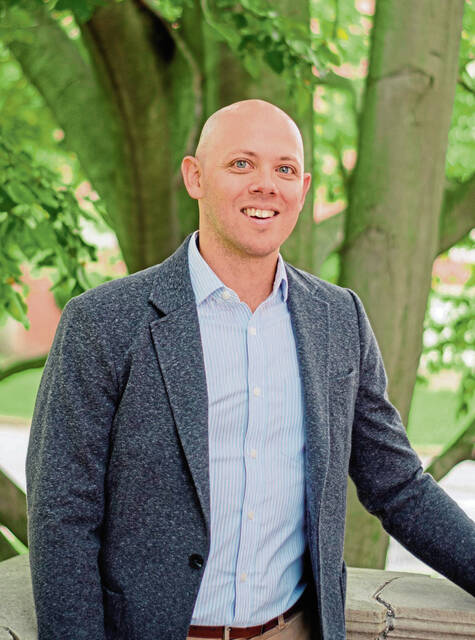Months after schism, former and current United Methodist churches pick up the pieces
This is the busy season for Pastor Dylan Parson.
Like many Methodist pastors, he leads not just the Hill Top congregation in Pittsburgh’s Allentown neighborhood but a charge of churches including Spencer and Fairhaven. Each building is within about 5 miles of the other on the south side of the Monongahela River. They comprise the South Hills Partnership of churches.
A single pastor caring for a geographically disparate flock is nothing particularly new among Methodists, but who they are and how they are led has most certainly changed in this 2023 Advent season.
This year marks the first Christmas since almost 40% of churches in the Western Pennsylvania Conference of the United Methodist Church officially disaffiliated from — in a word, left — the denomination.
Debates and disagreements over same-sex marriage and ordaining gay pastors, as well as the creation of a more conservative Global Methodist Church branch in mid-2022, accelerated the momentum of congregations voting to disaffiliate this year across the United Methodist denomination.
In June, 298 Western Pennsylvania churches made their split official at the annual conference in Erie. Since then, the 442 that remained have been picking up the pieces and reexamining their connection to their faith.
Western Pennsylvania Conference membership in 2021 was approximately 138,000. Based on that number, current membership minus the disaffiliated churches is estimated to be approximately 83,600, according to spokesperson Liz Lennox. Ten years ago, in 2013, the conference included 171,000 members; 15 years ago, in 2008, the conference included 186,000, according to conference statistical documents.
Finding footing
For the past three years, the South Hills Partnership has created a festive charity Christmas market, in which churchgoers donate money and gifts to stock a holiday shop for families in need.
The tradition was inspired by the home church of Parson’s wife, Harmony-Zelienople United Methodist in Butler County. That church disaffiliated this year to join the Global Methodist Church, and Parson knows many other people and churches who left, including about half of the churches he worked with while training as a pastor in North Carolina.
In the wake of disaffiliation, the holiday market is one thing that reminds Parson of community. His churches were not interested in leaving, and Fairhaven has become a Lighthouse Congregation, a church that welcomes people who are looking for a new UMC home after their home church disaffiliated.
“There’s an enormous amount of unity and a sense of shared mission around this, which I think is something that is easy to lose track of, especially in churches that have been consumed by infighting for years now,” he said. “This is like the opposite of that, and that’s a good thing.”
There’s a sense of anticipation as he prepares for Christmas.
“There’s something about Advent coming around every year as sort of a season of expectation and hope,” he said. “Things are going to be different; there is a promise that things are going to change, and that God is going to do something. That feels very relevant right now.”
A changing landscape
Among the 298 churches that left the United Methodist denomination, many in rural communities joined the newly formed, more conservative Global Methodists. That was the case in Scottdale, where an iconic stone building constructed in 1904 is now home to Trinity Methodist Church.
Joe Leighty, a longtime member, serves as chair of council and vice chair of trustees. He led the steering committee at Trinity during the disaffiliation process.
Aside from completing the official paperwork, things have been pretty much the same at Trinity since it disaffiliated, he said.
“A year and a half ago, I told our congregation that Trinity was not going to change — everything about Trinity was going to pretty much remain the same as far as our position in the community, our attitude, our worship,” Leighty said. “We have not changed from what we were before. We’re traditional, and that has not really changed.”
Another former United Methodist Church a few blocks away — the site for community spaghetti dinners and the longtime polling place for the town’s 3rd Ward until May’s primary election — has closed in the midst of the broader church’s disaffiliation atmosphere. Some new people have joined Trinity, Leighty said.
“We’ve got other new people who have wandered in and checked us out,” he said. “Everybody seems to like where we are going.”
In order to disaffiliate from the church, congregations were required to pay 2% of the church building’s assessed property value, a contribution to the UMC pension fund for retired clergy, and two years’ worth of the congregation’s annual apportionment that typically would be paid to the conference each year.
Leighty expects that Trinity Methodist Church will make back what it paid to the conference in “six or seven years.” He feels the requirements were fair.
“We had our disagreements with the leadership of the United Methodist Church, and that was the main reason why we disaffiliated,” he said. “It was the leadership, at the annual conference and the global level. That’s where the issues were, and we just couldn’t see eye to eye with where they wanted to go and where we wanted to be. But we parted friends.”
Darlene Simpson and her husband, John, sought out Circleville Global Methodist Church in Irwin in January because they heard it was planning to disaffiliate.
The two are active members, and Darlene has worked to set up a children’s play area in the church loft.
“As far as the feel, the congregation has been the same welcoming congregation as the first time we visited there,” she said. “As far as the worship services and all of that that we were looking for in a church, that has been extremely consistent for us.”
She and her husband wanted to join a Global Methodist Church because “we’re not so sure we’re comfortable with the directions that the leadership of the United Methodist Church are taking at this time.” However, she’s kept in touch with many people who are still part of the United Methodist Church.
“We have a lot of United Methodist friends,” Simpson said. “As a matter of fact, at New Year’s Eve, my husband and I will be hosting friends, and there will be I think 16 of us, and the other 14 are United Methodist.”
Focus on growth
Keith Boyette, connectional officer and CEO of the Global Methodist Church, expects it to grow.
While the window for churches to disaffiliate from the United Methodist Church under the current structure will close at the end of this year, Boyette said he thinks more churches will join moving forward, especially from outside the United States.
Some churches that were waiting to see what the United Methodist Church would decide on same-sex marriage might decide to leave after the April 2024 general conference, depending on the final decision.
“The process of disaffiliating is completely separate from the process of aligning,” Boyette explained. “Some churches have chosen to make the decision in the same time frame. Other churches have decided to finish the disaffiliation process before they begin talking about alignment. There can be three to six months or more after they disaffiliate, before they even apply to us for membership.”
The Global Methodist Church is in a transitional period, as it forms its own governing documents with an expectation that they’ll be set at a general conference in September.
United Methodists looking inward
United Methodist’s Western Pennsylvania Conference bishop, Cynthia Moore-Koikoi, says the tumult of disaffiliation has sparked new life for the remaining churches. House churches meet in homes or basements to fill a gap where there aren’t any local United Methodist churches within a reasonable distance, she said.
“We had more churches sign up to be Lighthouse churches than we thought would originally do that. We had to rev up our capacity to train,” she said. “Churches have gotten so excited about caring for people who were a part of nearby churches that disaffiliated. For some, it has energized their ministry.”
Moore-Koikoi hopes the church never fully settles to be stuck in its ways, even after this period of transition.
“I kind of hope that the ground doesn’t ever stop shaking,” she said. “If we get too comfortable and complacent, then we stop looking for the new thing that God is doing. I kind of hope that we always are just a little bit off-kilter, so that we are always looking for the new thing that God is doing.”
Still, there’s a bittersweet feeling in the air this Advent, she said, as this is a time of grief for many.
“Each time we gather for those kinds of annual celebrations, there’s a little mourning, because there are folks that were with us last year for the celebration that weren’t there this year,” she said. “People are mourning the loss of relationships, the loss of expectations of things that they thought they had with folks that they didn’t really have. We’re going through some grief, and in the midst of that, we’re moving on new opportunities for ministry that are presenting themselves almost on a daily basis.”
At Bethel United Methodist Church in Lower Burrell, Pastor Clint Phillips is feeling the weight of some of that grief himself.
“My home church left, and many of my dear friends left as pastors. Because of that, it’s been a very long grieving process in many ways,” he said. “They didn’t pass, but they passed from my life. That’s been a really tough place to be as a pastor.”
Phillips’ congregation at Bethel UMC has an “eclectic” mix of members and decided not to disaffiliate, instead opting to stay United Methodist and continue the work that the church is already doing. They’ve gained a few members from other churches in recent months.
“Having such a mix of folks within the congregation, we decided, financially, but also as far as the health of the congregation, that we should continue doing what we’re doing and make sure we met the needs of everyone who was already here,” he said.
He has seen an increased amount of engagement with church activities among his congregation, and feels like things are starting to finally stabilize following the disruption of the covid pandemic.
“Whether it’s been something in the back of their mind or whether it’s been something in the forefront, I have found most of our members have been seeking to do more,” he said. “What is driving that, I can’t exactly say, but I’ve been glad and very blessed to see that movement happening.”
New beginnings
Among the churches experiencing renewed activity after the disaffiliation are a few entirely new congregations.
The Remnant Faith Community, a new UMC church in Indiana County, was founded with the intent of welcoming people who might have previously felt excluded from United Methodist churches. That includes people who have lost their religious home through their local church disaffiliating, but also people who may be struggling with trauma, mental health issues or addiction, or going through recovery.
The group meets in a nontraditional church space, in a plaza near a Bi-Lo in Indiana that once housed a pizza shop. They hope to incorporate a cafe into the space at some point to make connections with the community.
Head Pastor Katrina Laude and lay leader Peggy Citeroni previously attended a church that disaffiliated. The two, along with associate Pastor Jenny Gordon, were passionate about helping people who “have been on the fringes of society,” and felt called to found The Remnant.
“We have a Lighthouse Congregation in the northern part of the Indiana District, but there isn’t another Lighthouse Congregation in the southern part of the district,” Gordon noted. “This is also another opportunity for people to find a place where they belong.”
The new church grew out of a United Methodist home church group that Citeroni had led in the months following this summer’s annual conference, but people from other churches and even from outside United Methodism have shown interest.
“We are at a time in our country, in the church, when there’s so much disagreement and so much standing up against this or that, and people have really just had it with organized religion,” Laude said. “A lot of people have come to me to say that they’re excited to be able to see something new — that although we are United Methodist, our focus is just very different than maybe what traditional churches would be — hopefully with a little less bureaucracy, a little less lack of desire or ability to change.”
“We’ve just got great hope through all of this,” Citeroni said. “I have said this all along, that I have felt that God is up to something big, that this — whether you call this a fresh expression of faith, whether you call this a renewal, a revival, a rebirth, whatever term you want to use — it’s very exciting.”
Lights shine on
In the middle of Greensburg, on College Avenue every Sunday, about 55 people attend Otterbein United Methodist Church.
According to Pastor Debra Mason, about eight of those people are new members who joined Otterbein after their previous churches disaffiliated. Otterbein is the only Lighthouse Congregation in the Westmoreland County region.
“What we do here is, when people want to join up, we acknowledge them coming to the church, and we open up the door as far as giving everybody an opportunity to welcome them,” said Mason, who was transferred to the church in July after pastoring at a church in Washington, Pa., for about a decade.
Mason brought a tradition from her previous church: extending a “right hand of fellowship” and encouraging members to shake hands and chat with newcomers to the church.
“There were some people here before I got here who came because their church had disaffiliated,” she said. “When I talked to those families, they said, ‘It looks like this is where we want to stay.’ I’m so glad that we became one of those churches that wanted to be open for folks to come and feel safe, to stay a while and figure out what they want to do.”
Mason expects her church might see more people join after the holidays — maybe even people who left the United Methodist Church deciding to come back.
As for the future, post-disaffiliation, Mason sees movement in a positive direction, even as numbers churchwide have shrunk.
“Sometimes it’s good to prune the tree for it to grow. Sometimes change is good,” she said. “A lot of people have been so shocked by the disaffiliation … it’s causing people to rethink why they are United Methodist, and the value of their church, and their congregation, and their worship, brings to them and their lives.
“We all need to sometimes be more intentional about our walk with God. I think this allows us the opportunity to do that.”
Julia Maruca is a TribLive reporter covering health and the Greensburg and Hempfield areas. She joined the Trib in 2022 after working at the Butler Eagle covering southwestern Butler County. She can be reached at jmaruca@triblive.com.
Remove the ads from your TribLIVE reading experience but still support the journalists who create the content with TribLIVE Ad-Free.




